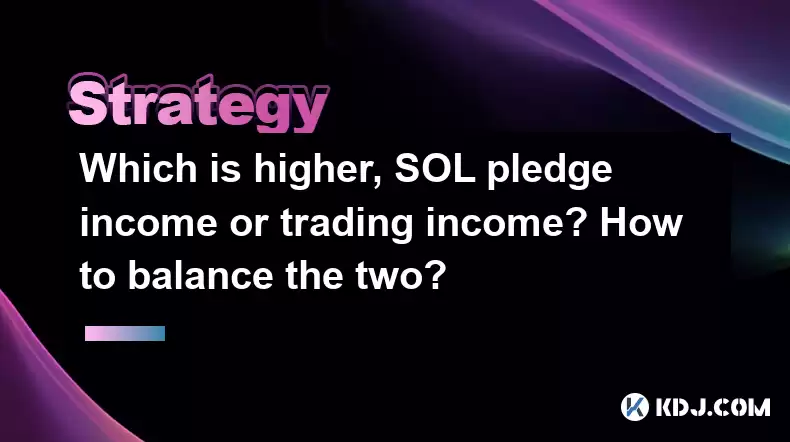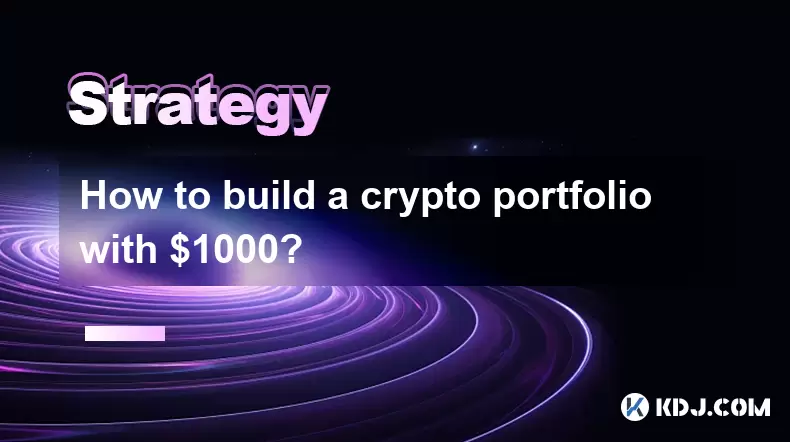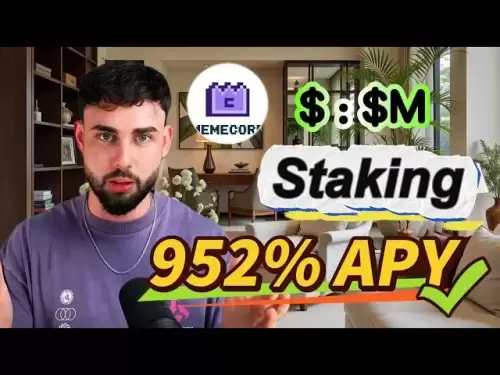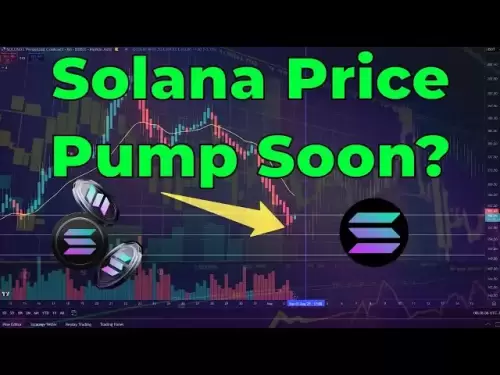-
 Bitcoin
Bitcoin $114400
1.32% -
 Ethereum
Ethereum $3499
2.20% -
 XRP
XRP $2.922
4.26% -
 Tether USDt
Tether USDt $0.0000
0.03% -
 BNB
BNB $752.6
1.53% -
 Solana
Solana $161.8
1.64% -
 USDC
USDC $0.9999
0.01% -
 TRON
TRON $0.3267
1.32% -
 Dogecoin
Dogecoin $0.1991
3.02% -
 Cardano
Cardano $0.7251
3.29% -
 Hyperliquid
Hyperliquid $38.32
3.36% -
 Stellar
Stellar $0.3972
7.58% -
 Sui
Sui $3.437
2.74% -
 Chainlink
Chainlink $16.29
3.65% -
 Bitcoin Cash
Bitcoin Cash $545.3
3.70% -
 Hedera
Hedera $0.2482
7.49% -
 Ethena USDe
Ethena USDe $1.001
0.03% -
 Avalanche
Avalanche $21.40
2.02% -
 Toncoin
Toncoin $3.579
1.56% -
 Litecoin
Litecoin $109.3
2.20% -
 UNUS SED LEO
UNUS SED LEO $8.951
-0.18% -
 Shiba Inu
Shiba Inu $0.00001220
2.75% -
 Polkadot
Polkadot $3.613
2.99% -
 Uniswap
Uniswap $9.173
3.78% -
 Monero
Monero $302.6
2.62% -
 Dai
Dai $0.0000
0.00% -
 Bitget Token
Bitget Token $4.320
1.52% -
 Pepe
Pepe $0.00001048
3.40% -
 Cronos
Cronos $0.1314
4.33% -
 Aave
Aave $259.4
3.54%
Which is higher, SOL pledge income or trading income? How to balance the two?
SOL pledge income offers steady returns through staking, while trading income can yield higher profits but with increased risk and active management.
Apr 29, 2025 at 09:00 am

The question of whether SOL pledge income or trading income is higher is a common one among cryptocurrency enthusiasts, especially those invested in Solana (SOL). Both forms of income have their unique advantages and potential returns, and the best choice often depends on individual financial goals, risk tolerance, and market conditions. In this article, we will delve into the details of both SOL pledge income and trading income, compare their potential returns, and discuss strategies for balancing the two.
SOL Pledge Income: Understanding Staking
SOL pledge income, also known as staking, involves holding SOL in a wallet to support the operations of the Solana blockchain. In return, participants receive rewards in the form of additional SOL. Staking is a fundamental aspect of proof-of-stake (PoS) blockchains like Solana, where validators are chosen to create new blocks based on the amount of cryptocurrency they hold and are willing to "stake" as collateral.
To start staking SOL, you will need to follow these steps:
- Choose a staking platform: There are several options available, including exchanges like Binance and Coinbase, as well as dedicated staking services like Lido and Marinade Finance.
- Transfer your SOL to the staking platform: Ensure that you have enough SOL to meet the minimum staking requirements of the chosen platform.
- Delegate your SOL to a validator: Most platforms will allow you to choose from a list of validators. Research their performance and reliability before making a decision.
- Monitor your rewards: Staking rewards are typically distributed periodically, and you can track your earnings through the platform's interface.
The advantages of SOL pledge income include passive income generation, relatively lower risk compared to trading, and the opportunity to contribute to the security and efficiency of the Solana network. However, the potential returns from staking are generally lower than those from successful trading, and the rewards are subject to market fluctuations and validator performance.
Trading Income: Navigating the Markets
Trading income involves buying and selling SOL or other cryptocurrencies on exchanges to profit from price movements. Trading can be done through various strategies, including day trading, swing trading, and long-term investing. The potential returns from trading can be significantly higher than those from staking, but it comes with increased risk and requires more active management.
To start trading SOL, you will need to follow these steps:
- Choose a reputable exchange: Popular options include Binance, Coinbase, and Kraken. Ensure that the exchange supports SOL trading pairs.
- Complete the registration and verification process: Most exchanges require identity verification to comply with regulatory requirements.
- Deposit funds into your exchange account: You can deposit fiat currency or transfer cryptocurrencies from another wallet.
- Place your trades: Decide on your trading strategy and execute buy and sell orders based on your analysis of market trends and SOL's price movements.
- Monitor and manage your positions: Keep track of your trades and be prepared to adjust your strategy based on market conditions.
The advantages of trading income include the potential for higher returns, the flexibility to adapt to market changes, and the ability to leverage various trading strategies. However, trading also comes with higher risks, including market volatility, potential losses, and the need for constant monitoring and decision-making.
Comparing SOL Pledge Income and Trading Income
When comparing SOL pledge income and trading income, several factors need to be considered:
- Potential returns: Trading has the potential for higher returns, especially during bullish market conditions. However, it also comes with the risk of significant losses. Staking offers more predictable, albeit lower, returns.
- Risk level: Staking is generally considered less risky than trading, as it does not involve the same level of market exposure. However, staking rewards can still be affected by validator performance and market fluctuations.
- Time commitment: Staking requires minimal time and effort once set up, making it a more passive income source. Trading, on the other hand, requires constant monitoring and decision-making, making it a more active endeavor.
- Contribution to the network: Staking directly supports the Solana network by helping to secure and validate transactions. Trading does not have the same direct impact on the network's operations.
Balancing SOL Pledge Income and Trading Income
Balancing SOL pledge income and trading income can help you diversify your income streams and manage risk effectively. Here are some strategies to consider:
- Allocate a portion of your SOL to staking: This can provide a steady stream of passive income while freeing up the rest of your SOL for trading.
- Use staking rewards to fund trading: Reinvest your staking rewards into trading activities to potentially amplify your returns.
- Adjust your allocation based on market conditions: During bullish market conditions, you might want to allocate more SOL to trading to capitalize on potential price increases. During bearish conditions, increasing your staking allocation can provide a more stable income source.
- Diversify your trading strategies: Combine short-term trading with long-term investing to balance potential returns and risk.
Practical Example of Balancing SOL Pledge Income and Trading Income
Let's consider a practical example of how you might balance SOL pledge income and trading income:
- Initial allocation: You start with 1000 SOL. You decide to allocate 700 SOL to staking and 300 SOL to trading.
- Staking setup: You choose a staking platform like Lido and delegate your 700 SOL to a reliable validator. You earn a staking reward of approximately 6% annually, which translates to 42 SOL per year.
- Trading strategy: You decide to use a combination of day trading and swing trading for your 300 SOL. You set a goal of achieving a 20% return over the year, which would be 60 SOL.
- Reinvestment: You reinvest your staking rewards into your trading activities, increasing your potential trading returns.
- Monitoring and adjustment: You regularly monitor both your staking and trading activities. If the market becomes particularly volatile, you might decide to shift more SOL from trading to staking to reduce risk.
Frequently Asked Questions
Q: Can I stake SOL on multiple platforms simultaneously?
A: Yes, you can stake SOL on multiple platforms simultaneously, as long as you meet the minimum staking requirements for each platform. However, managing multiple staking accounts can be more complex, so it's important to keep track of your allocations and rewards.
Q: What are the tax implications of staking and trading SOL?
A: The tax implications of staking and trading SOL can vary depending on your jurisdiction. In many countries, staking rewards are considered taxable income, while trading profits may be subject to capital gains tax. It's advisable to consult with a tax professional to understand your specific tax obligations.
Q: How can I minimize the risks associated with trading SOL?
A: To minimize the risks associated with trading SOL, consider the following strategies:
- Diversify your portfolio: Don't put all your funds into SOL; spread your investments across different cryptocurrencies and asset classes.
- Use stop-loss orders: Set stop-loss orders to automatically sell your SOL if the price drops to a certain level, limiting potential losses.
- Conduct thorough research: Stay informed about market trends, news, and technical analysis to make more informed trading decisions.
- Start with small trades: Begin with smaller trades to gain experience and confidence before increasing your trading volume.
Q: Is it possible to switch between staking and trading frequently?
A: Yes, it is possible to switch between staking and trading frequently, but it can be cumbersome and may incur transaction fees. If you plan to switch often, consider the costs and time involved in moving your SOL between staking platforms and trading exchanges.
Disclaimer:info@kdj.com
The information provided is not trading advice. kdj.com does not assume any responsibility for any investments made based on the information provided in this article. Cryptocurrencies are highly volatile and it is highly recommended that you invest with caution after thorough research!
If you believe that the content used on this website infringes your copyright, please contact us immediately (info@kdj.com) and we will delete it promptly.
- Cold Wallet vs. MetaMask: A Web3 Wallet Revolution?
- 2025-08-04 06:30:12
- Chainlink Price Prediction: Bearish Continuation or a Bullish Reversal?
- 2025-08-04 06:35:12
- Bitcoin Whale Alert: Navigating Liquidation Risks in a Volatile Market
- 2025-08-04 07:10:12
- BNB Price Under Pressure: Navigating the Bearish Trend and Market Sentiment
- 2025-08-04 07:15:12
- Bitcoin Price Wobbles: Options Analysis Points to Bullish Undercurrent Despite Dip
- 2025-08-04 04:30:12
- Ark Invest, Coinbase, and Bitcoin: Decoding the Crypto Investment Landscape in NYC
- 2025-08-04 04:30:12
Related knowledge

How to avoid common crypto investment mistakes?
Jul 13,2025 at 01:35am
Understanding the Risks of Crypto InvestmentInvesting in cryptocurrency can be highly rewarding, but it also comes with significant risks. One of the ...

What is a long-short crypto strategy?
Jul 15,2025 at 10:56am
Understanding the Basics of a Long-Short Crypto StrategyA long-short crypto strategy is an investment approach where traders simultaneously take long ...

What is a long-short crypto strategy?
Jul 11,2025 at 01:28pm
Understanding the Basics of Long-Short Crypto StrategyA long-short crypto strategy is an investment approach where traders take both long and short po...

How to use the RSI indicator for crypto?
Jul 12,2025 at 03:56pm
Understanding the RSI Indicator in Cryptocurrency TradingThe Relative Strength Index (RSI) is a momentum oscillator used to measure the speed and chan...

Is copy trading a good strategy for crypto beginners?
Jul 12,2025 at 08:28am
Understanding Copy Trading in the Cryptocurrency MarketCopy trading is a strategy where novice traders replicate the trades of experienced investors a...

How to build a crypto portfolio with $1000?
Jul 13,2025 at 08:14pm
Understanding the Basics of Cryptocurrency InvestmentBuilding a crypto portfolio with $1000 starts with understanding the fundamentals of cryptocurren...

How to avoid common crypto investment mistakes?
Jul 13,2025 at 01:35am
Understanding the Risks of Crypto InvestmentInvesting in cryptocurrency can be highly rewarding, but it also comes with significant risks. One of the ...

What is a long-short crypto strategy?
Jul 15,2025 at 10:56am
Understanding the Basics of a Long-Short Crypto StrategyA long-short crypto strategy is an investment approach where traders simultaneously take long ...

What is a long-short crypto strategy?
Jul 11,2025 at 01:28pm
Understanding the Basics of Long-Short Crypto StrategyA long-short crypto strategy is an investment approach where traders take both long and short po...

How to use the RSI indicator for crypto?
Jul 12,2025 at 03:56pm
Understanding the RSI Indicator in Cryptocurrency TradingThe Relative Strength Index (RSI) is a momentum oscillator used to measure the speed and chan...

Is copy trading a good strategy for crypto beginners?
Jul 12,2025 at 08:28am
Understanding Copy Trading in the Cryptocurrency MarketCopy trading is a strategy where novice traders replicate the trades of experienced investors a...

How to build a crypto portfolio with $1000?
Jul 13,2025 at 08:14pm
Understanding the Basics of Cryptocurrency InvestmentBuilding a crypto portfolio with $1000 starts with understanding the fundamentals of cryptocurren...
See all articles

























































































